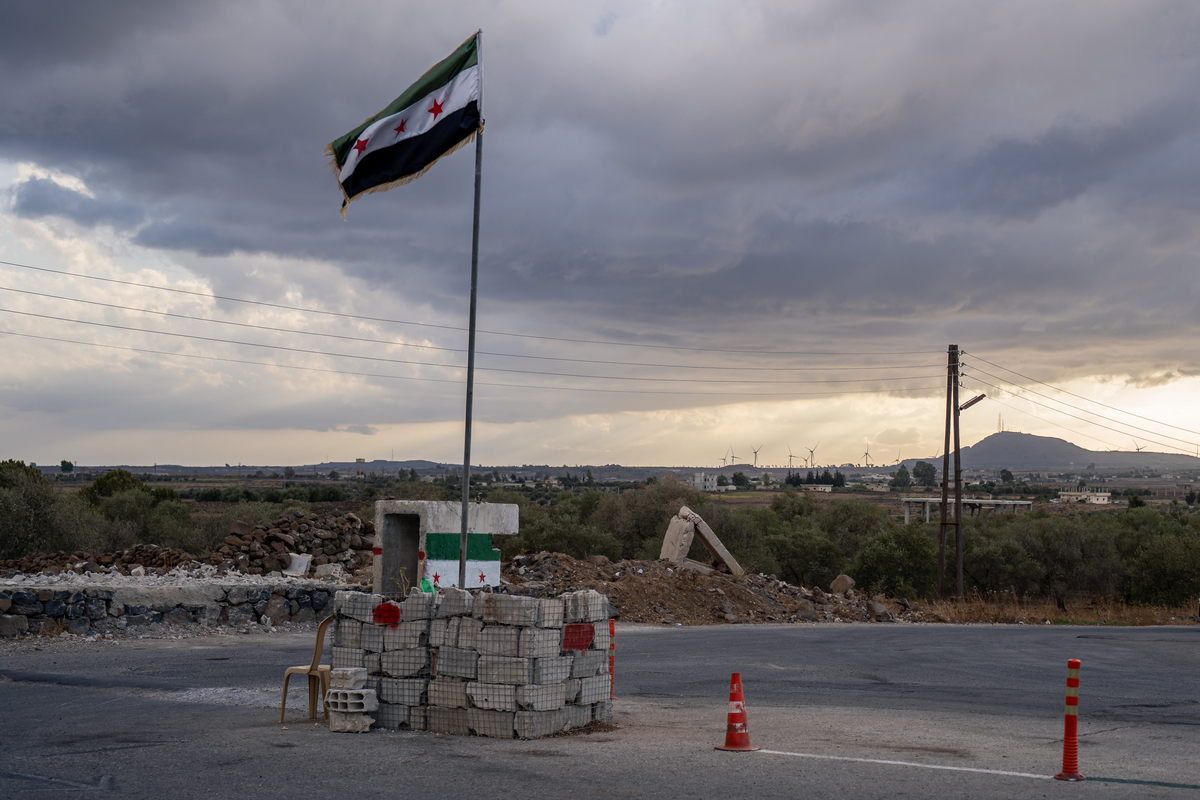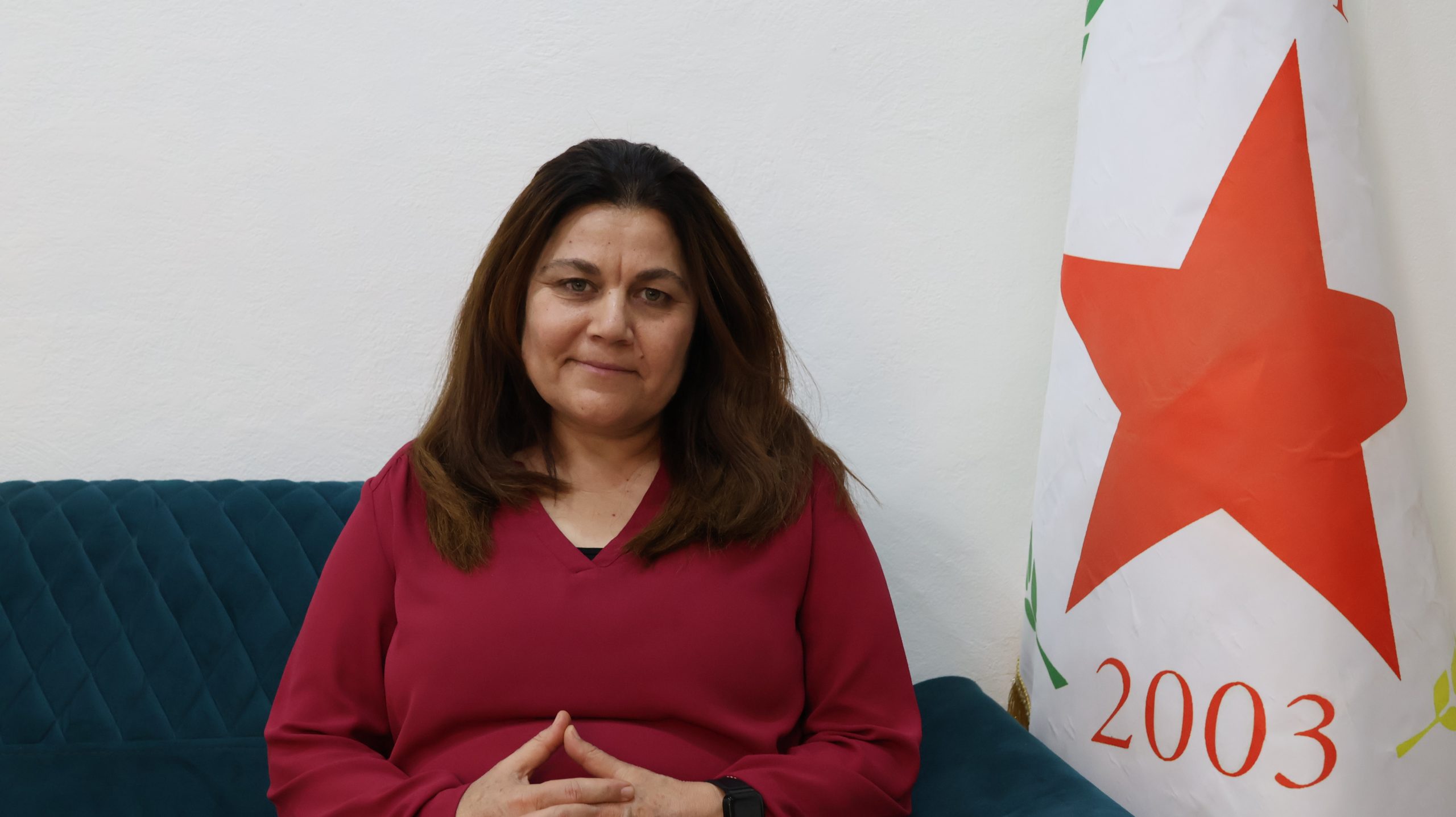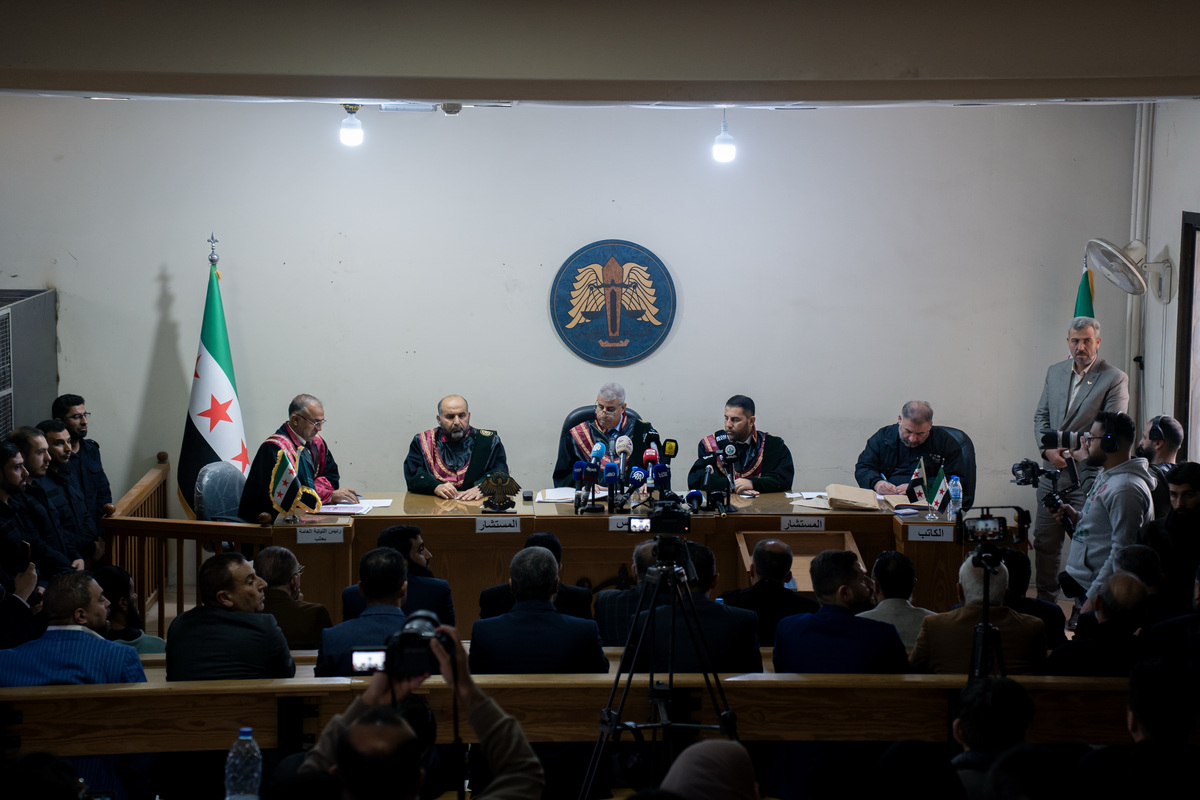Life Under Fire in Quneitra
Picture credit: Charles Cuau
On Wednesday, October 8, Mohammad Makkieh, 23, was hit by an explosive bullet in his left calf while collecting wood in the Jabhat al-Khashab forest, just after noon, slightly after the curfew began. This forest lies within the demilitarized zone of the Golan Heights, where, since the collapse of Bashar al-Assad’s control, the Israeli army has increasingly asserted its presence.
The plains of Quneitra, in southern Syria, have stark, arid tones: volcanic black rocks punctuate the ochre grasslands. Beyond the final Interior Ministry checkpoint lies the Golan buffer zone. Recently, mounds of earth and fresh rock have appeared, makeshift roadblocks left by Israeli soldiers during their incursions.
These temporary barriers mark more than just a military footprint. On 8 December 2024, following clashes in southern Syria, Israeli Prime Minister Benjamin Netanyahu ordered troops to “take control” of the buffer zone.
For decades, this arrangement upheld a tense but steady status quo.
That balance is now shifting.
The 1974 Disengagement Agreement between Israel and Syria created a UN-monitored buffer zone between the two countries. Lying on the eastern front of the Golan Heights that has been occupied by Israel following the 1967 war, the separation zone was meant to remain demilitarized and neutral, under the watch of the United Nations Disengagement Observer Force (UNDOF). For decades, this arrangement upheld a tense but steady status quo.
That balance is now shifting. Israeli incursions, new outposts, and restricted access to farmland suggest a quiet, unilateral redrawing of boundaries.
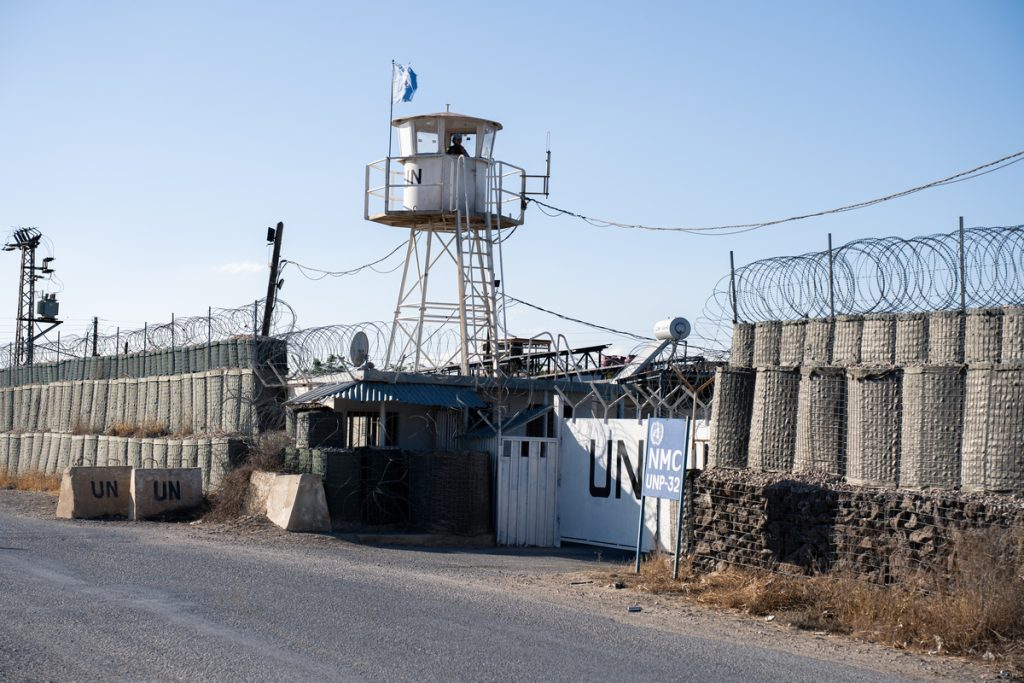
A UNDOF base near Khan Arnabeh. Picture Credits: Charles Cuau
The “David path”
Sabta Faraj once lived in the village of Hamidiyeh, just meters from the Alpha Line, which marks the western boundary of the buffer zone. From her front porch, she could see the Israeli base on the occupied Golan. But on 18 December, Israeli soldiers stormed her village. “They threw grenades, broke the door, and entered the house,” Sabta recalls. She now lives with her sister near Damascus. All that remains of her home is a few photos on her phone. In a video, the red walls lie crumbled in dust.
That day, thirty families were expelled from the village. Israeli forces occupied their homes, only to demolish them weeks later. “This is our land; you have no right to be here,” the soldiers reportedly shouted at villagers. They spoke of securing the “David path”, a three-kilometer-wide strip along the Alpha line now quietly being annexed, bit by bit.
A similar pattern is reported in al-Rafeed, a village further south within the buffer zone. Local farmers have been barred from accessing their land. “About 200 of us lost our fields,” says Zayed, a farmer who declined to give his last name. “That affected at least 1,500 people, families who can no longer feed themselves.”
The questions are always the same: “Where are the weapons hidden? Are there members of Hezbollah or Iranian militias hiding here?”
From the village road, Israeli wind turbines spin in the distance. “They come almost every day since December 8,” says Omar Ismail, a local elder who gathered a few men from the village to discuss the situation. Soldiers arrive in convoys, often at night. Residents report being forced out of their homes, with men separated for questioning, sometimes violently. The questions are always the same: “Where are the weapons hidden? Are there members of Hezbollah or Iranian militias hiding here?”
Israel has cited the threat of Hezbollah and Iranian-backed militias as justification for its actions in the area. Under Assad, these groups operated with relative freedom in southern Syria. Though officially withdrawn, some individuals with past militia ties may still live in the region. “Some people had dealings with militias,” says Majid Alfares, from the local branch of the Ministry of Information. “But it was financial, not ideological. And we know who they are, we’re watching them ourselves.”
Following the 7 October attacks in 2023, Israel announced plans to fortify the Alpha Line, citing potential threats from Syria. Barbed-wire fences have since been erected, and more land has become off-limits to civilians. A UNDOF convoy passes by al-Rafeed silently: a truck and three white SUVs marked with the blue “UN” emblem. Since 1974, UNDOF has been tasked with monitoring the implementation of the treaty’s terms. But with only an observation mandate and no coercive power, the scope of action of its soldiers is strictly limited.
Impacts on daily life
On 18 March, shepherd Nasser Ahmad led his flock near the Alpha Line, a few kilometers from al-Rafeed. An Israeli armored vehicle stopped close. “They started shooting at me and my sheep,” he says. Seventy-five animals were killed, including pregnant ewes. “It was a huge financial loss,” he adds. “Now I can’t afford to feed the rest of them, and I struggle to support my family.” To Nasser, the intention was clear: to send a message to other farmers that this area is now forbidden to them.
Access to health care has also become dangerous here. Dr. Mahmoud Ismail, the village doctor, says that he no longer makes house calls at night. “It’s too risky. There are raids and random checkpoints.” The nearest functioning hospital is in Al-Salam, but reaching it after dark is often impossible.
According to Majid Alfares, at least seven Israeli military positions have been established inside the buffer zone since late 2024.
According to Majid Alfares, at least seven Israeli military positions have been established inside the buffer zone since late 2024. Some are newly built; others are expansions of long-standing posts. The hills and strategic points are now firmly under Israeli control. Leaving the locals with a feeling of being constantly monitored.
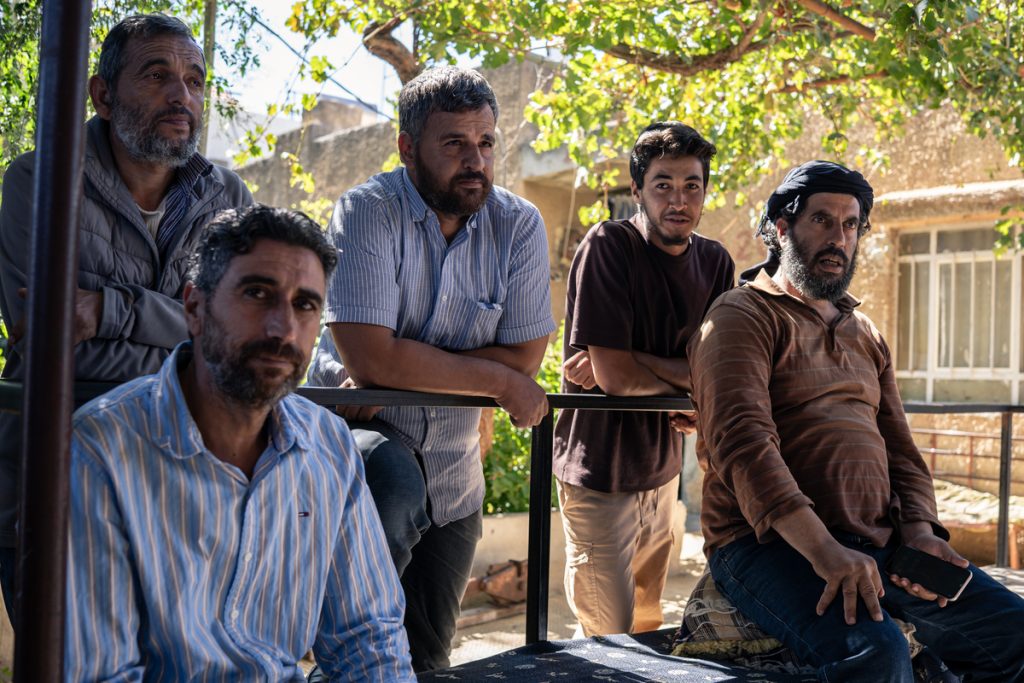
A group of farmers and inhabitants from the town of Al Rafeed, located in the buffer zone and right next to the Alpha line, which delimitates the border between Syria and the Golan Heights, occupied by Israel since 1967. They witness Israeli patrols and violations on a weekly basis, and the presence of the Israeli army has strongly impacted the way they work and live. On the right with the turban, Zayed cannot work in some of his crops because they are too close from the Alpha line and the Israelis have prevented him from going there.
Meanwhile, the local economy also suffers. Khaled Alkrian, a municipal worker in Swaisa, says that fuel prices rose due to restricted access. To curry favor with the local population, Israeli forces distribute humanitarian aid in some villages, which residents view with suspicion. “They know the local structures. It’s not about helping us, it’s about intelligence gathering,” believes Alkrian.
A feeling of abandonment
In late September, Damascus announced that negotiations with Israel were nearing completion, but major issues remain unresolved
Many feel utterly forsaken. “The government has abandoned us,” Alkrian says. “We have no basic services, no assistance.” A proposed security agreement between Israel and Syria offers a glimmer of hope but also concern. “We don’t want a deal that’s against Syria,” he says. He would only view a return to the 1974 terms as acceptable, but optimism is low. “The government is scared of Israel, that’s the truth,” he adds.
In late September, Damascus announced that negotiations with Israel were nearing completion, but major issues remain unresolved: Israeli refusal to withdraw from Mount Hermon, and the status of the Golan Heights, still considered occupied Syrian territory by the UN. Syria has ruled out any normalization.
One Disappearance Among Many
In the village of Trenjeh, near Mount Hermon, the Bakr family waits for news of their son, Kinan. On 18 August, around 2 a.m., Israeli soldiers surrounded their home. “They shouted, asking how many men were inside,” says Houda Bakr, Kinan’s mother. “I told them it was just me, my daughter, and my husband.” The soldiers searched the family, frightening the children. Kinan then stepped outside. “They chained him, dragged him into the courtyard, insulted him,” recalls Imane, his wife. “They accused him of hiding weapons. He tried to explain, but they beat him.” Kinan only owned a small pistol, common in rural areas. The rest of the family was detained in a room and interrogated. Kinan has not been seen since.
Mahmoud Bakr, his father, contacted a nearby UN base. “They said they couldn’t act, but would arrange a meeting with the Israelis.” Days passed. No word came. Even the local municipality offered no help. The only news came from Hamoked, an Israeli human rights group that informed the family that the Israeli government denies holding Kinan. In the village, four men have gone missing.
Israel might try to justify this disappearance with references to smuggling activity, common in this border region. “That kind of activity already existed under Bashar al‑Assad and never caused them problems,” says the family patriarch. He doesn’t deny Kinan might have been involved, but insists that nothing justifies his abduction.
Quneitra’s buffer zone is no longer neutral ground. While international law remains clear and the Golan is recognized by the UN as Syrian territory, the facts on the ground have changed.
Pauline Vacher
Pauline is a freelance journalist currently based in Damascus, with a Master's degree in Middle Eastern Geopolitics from the École normale supérieure in Paris. She previously worked on the international desk at L’Orient-Le Jour in Beirut, and later joined the investigations unit at Reporters Without Borders. Today, she continues to report on the Middle East from Syria.

